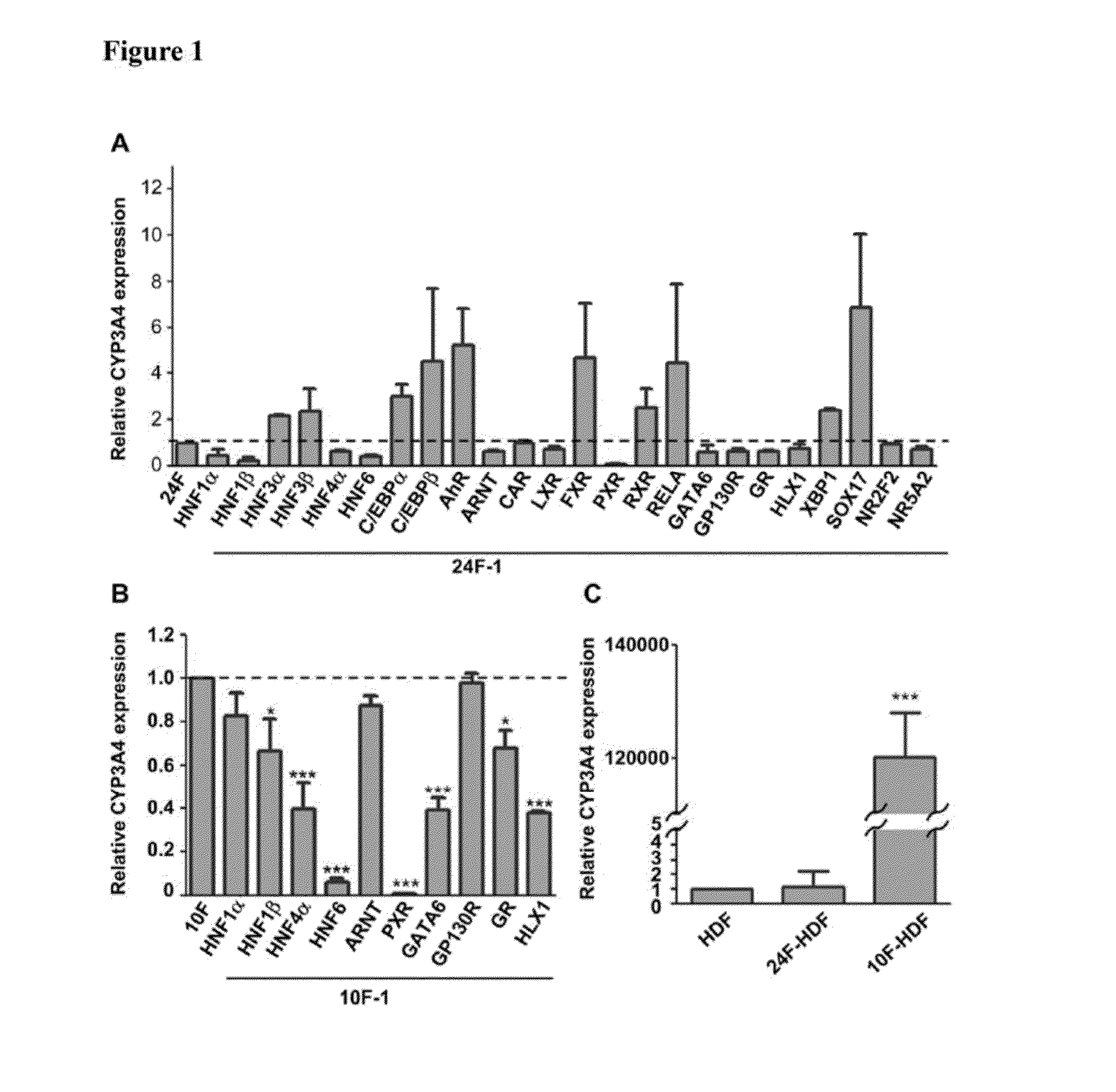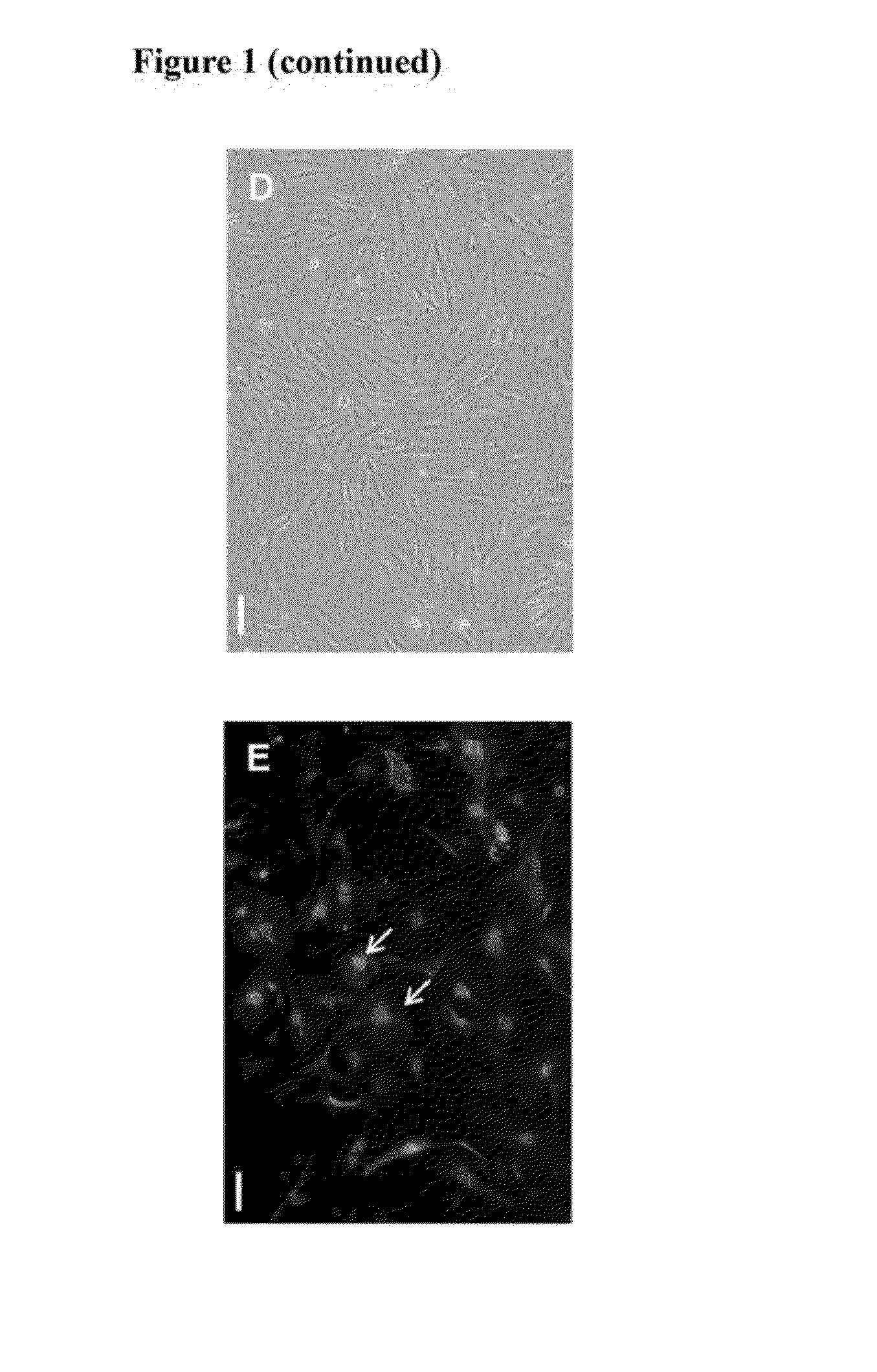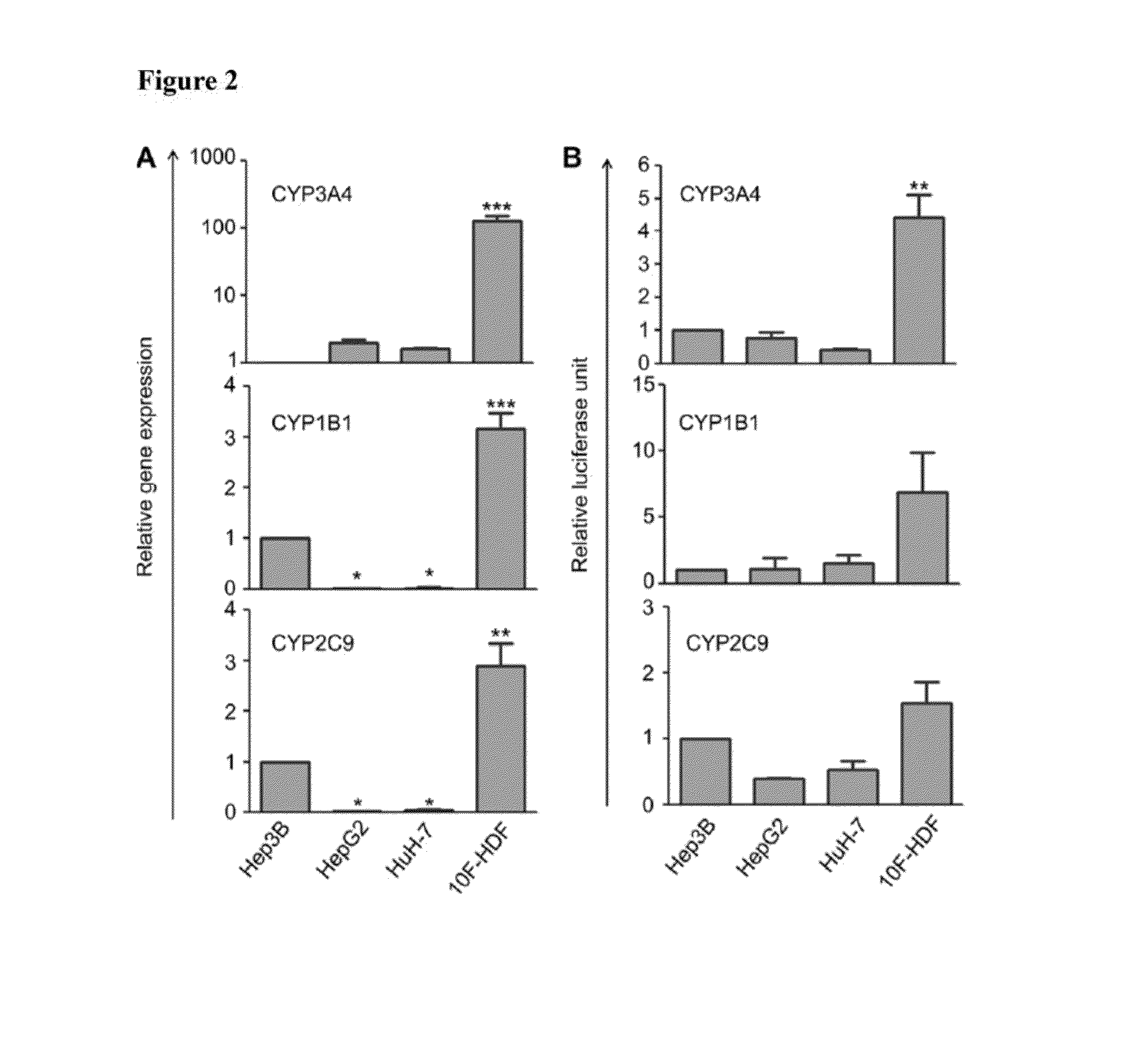Kit for drug metabolism determination and toxicity prediction
a drug metabolism and kit technology, applied in the field of drug metabolism determination and toxicity prediction, can solve the problems of huge loss of industry money, severe harm to patients, and 40% of the end of marketing candidate drugs
- Summary
- Abstract
- Description
- Claims
- Application Information
AI Technical Summary
Benefits of technology
Problems solved by technology
Method used
Image
Examples
example 1
Selection of 10 from 24 Factors Optimally Inducing CYP3A4 Expression in HDFs
[0051]Because CYP3A4 is the most abundant and important among liver CYPs in metabolizing exogenous xenobiotics and drugs, the selection of a combination among the 24 cloned hepatocyte specific factors to optimally express CYP3A4 in HDFs was conducted. The recombinant lentiviruses (each at 75 MOI) were used to infect HDFs for 2 weeks in ordinary culture dishes coated with polystyrene. Aliquots of 1×104 HDFs in 0.5 mL of culture medium were seeded in 24-well plates and cultured for 1 day before they were infected by indicated combinations and multiplicity of infection (MOI) of recombinant lentiviruses. The virus-infected cells were maintained for 2 weeks in 24-well plates with a medium change every 2-3 days. In addition to all the prepared 24 factors, the infection of the cells using virus pools omitting respective one from the 24 factors were also tested.
[0052]Total RNAs of the cells were extracted using REzo...
example 2
Comparing 10F-HDFs with Human Hepatoma Cell Lines
[0056]As alternatives to human hepatocytes whose sources were limited, human hepatoma cell lines were frequently used to determine drug metabolism though their drug-metabolizing activities were much lower than hepatocytes. Here, our 10F-HDFs were compared with human hepatoma cell line Hep3B, HepG2 and HuH-7 regarding their expression and functional activities of certain phase I enzymes CYP3A4, CYP1B1 and CYP2C9. Cell-based assays were used to determine cellular activities of CYP3A4, CYP2C9 and CYP1B1 (Promega Corp., Madison, Wis., USA). Cells were incubated with substrates (50 μM Luciferin-PFBE for CYP3A4, 100 μM Luciferin-H for CYP2C9, and 100 μM Luciferin-CEE for CYP1B1, respectively) at 37° C. for 3 h with occasional mixing by swirling or inverting. After incubation, an aliquot of 50 μL of medium was transferred from each well to a 96-well opaque white luminometer plate at room temperature, 50 μL of luciferin detection reagent was ...
example 3
Determination of Optimal Culture Conditions for Spheroid Formation of 10F-HDFs
[0058]Cells cultured into spheroids or into 3D scaffolds have been frequently reported to enhance or maintain longer their functions or phenotypes. Here it was tested whether 10F-HDFs cultured into spheroids and accommodated in certain scaffolds may enhance their CYP expression and activities.
[0059]First, how big of the spheroids to be used must be decided. Using HydroCell dishes to form spheroids, the diameters of the formed spheroids were found closely correlated with the initial cell seeding densities. FIG. 3A showed the morphology of the spheroids formed on HydroCell dishes 4 days after culture of 10F-HDFs. The spheroids apparently became larger and larger as the initial cell seeding densities increased. After 4 days' culture, the average spheroid diameters were 35.3, 37.5, 63.8, 103.2, 163.5, and 606.7 μm, respectively, when cells were initially seeded at densities of 1×105, 2×105, 5×105, 1×106, 2×106...
PUM
 Login to View More
Login to View More Abstract
Description
Claims
Application Information
 Login to View More
Login to View More - R&D
- Intellectual Property
- Life Sciences
- Materials
- Tech Scout
- Unparalleled Data Quality
- Higher Quality Content
- 60% Fewer Hallucinations
Browse by: Latest US Patents, China's latest patents, Technical Efficacy Thesaurus, Application Domain, Technology Topic, Popular Technical Reports.
© 2025 PatSnap. All rights reserved.Legal|Privacy policy|Modern Slavery Act Transparency Statement|Sitemap|About US| Contact US: help@patsnap.com



